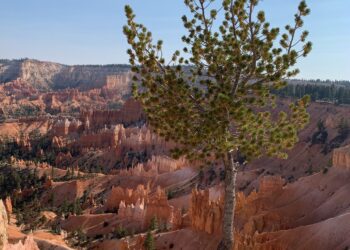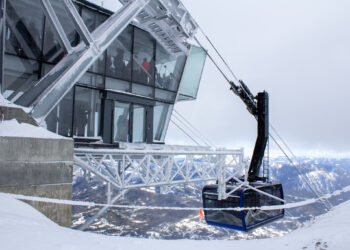By Gabrielle Gasser ASSOCIATE EDITOR

GALLATIN VALLEY – In a Tuesday evening Zoom talk, Dr. Cathy Whitlock took listeners through a comprehensive summary of the past, present and future of climate change. She focused on the Greater Yellowstone Ecosystem and the hyper-local effects this global phenomenon will have on the nation’s first national park.
Nonprofit Gallatin Valley Earth Day kicked off its event series leading up to Earth Day on April 22 with Whitlock’s talk, “Climate Change in Greater Yellowstone’s Watersheds,” on March 8. Created in 2019 by the nonprofit’s committee chair, Anne Ready, Gallatin Valley Earth Day is celebrating the 50th anniversary of the Clean Water Act with the theme “Celebrating water stewardship: past, present and future.”
Whitlock, regents professor emeritus of Earth Sciences at Montana State University and fellow of the Montana Institute on Ecosystems, kicked off the evening by discussing the long-term time scales that can be studied through ice cores. Whitlock is the co-author of the Montana Climate Assessment, the Montana Climate Solutions Plan, a recent report on Climate Change and Human Health in Montana as well as the Greater Yellowstone Climate Assessment.
“We are looking at something that’s quite unusual for the last 11,000 years and the last 20,000 years since the last ice age,” Whitlock said. “We just haven’t been as warm as we are in this decade. And so I think it’s fair to say that we are moving into uncharted territory on a 20,000-year timescale.”
She acknowledged that right now, in southwestern Montana, the one thing on everyone’s mind is water.
“In our region, I think the thing that we’re most aware of right now [that we] think about with climate change is drought,” she said.
Moving into the more recent past since 1950, Whitlock shared that carbon dioxide levels are higher than any period in the last 3.3 million years and, on average, Yellowstone is now 2.3 degrees warmer than it was in 1950.
What does this mean for the region?
It means the region receives about 24 inches less snow annually below 8,000 feet, stream flows now occur eight days earlier than in 1950 and the growing season is now two weeks longer, according to Whitlock. She explained that warming has spurred overall shifts in the seasons and precipitation at different times.
As climate scientists look to the future and predictive models, Whitlock says we can expect to see most of our runoff start to come in February, March and April, leaving July unusually dry and leading to a larger shift in seasonal water availability. As temperatures warm, she says, we can expect slush and rain instead of snow.
“Overall, there will be less annual demand for energy in this region,” Whitlock said. “It’s going to be less reliable snow conditions, especially the shoulder season, and our stream flows will be lower and our waters will be warmer in summer. Those have implications for recreation.”
Current predictions place the world on a stabilization scenario, according to Whitlock, meaning that the globe will still warm about five more degrees by the end of the century.

Equipped with this information, what do we do about it?
Whitlock says the first step is to flatten the curve, meaning globally reduce emissions of greenhouse gasses and reach carbon neutrality by 2050. She also urged the audience to think locally and prepare to adapt as drought and warming temperatures continue to wreak havoc on the ecosystem.
“Water is going to be a precious commodity that becomes more and more uncertain, and more and more in short supply,” she said. “And while there’s these other issues going on, they’re all threaded together by water.”
Ready, who organized the event, emphasized the importance of this talk in a March 9 interview with EBS.
“I think it’s an extremely important topic because it’s going to impact the foundation of our whole economy in this area,” she said. “If we don’t have the snow and we don’t have the water then it’s going to be hard for everyone to live here.”
Dr. Richard Ready, professor of Environmental and Natural Resource Economics at Montana State University, will give the next talk in the series, “What Can Be Done About Climate Change, and How Much Will it Cost?” on March 22 at 7 p.m. on Zoom.
Richard and Whitlock’s talks are intended to be companion talks, according to Ready. She said that Whitlock’s talk laid out the issue and Richard’s talk will discuss potential solutions.
Following Richard’s talk, GVED has planned a great lineup of events which will culminate with the 2022 Earth Day Festival at the Emerson Center for the Arts and Culture. Visit gallatinvalleyearthday.org for more information.
To wrap up her talk, Whitlock left listeners with an emotional call to action.
“This is a singular ecosystem,” she said. “It’s the last nearly intact, pristine ecosystem in temperate latitudes in the world. And we have a special responsibility, I think, to leave the wild lands and our wild rivers and waterways in good shape for the next generation.”












